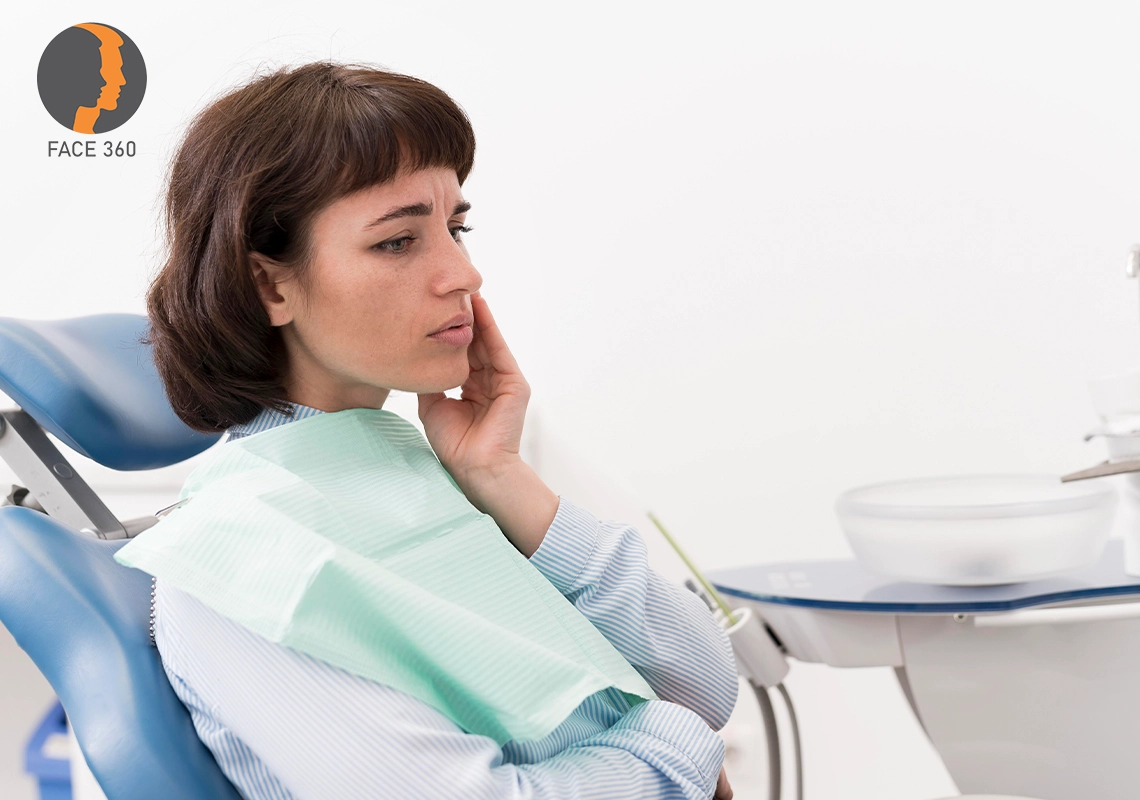Face360 is pleased to introduce facial aesthetics that serves exceptional services to enhance the beauty and harmonize both facial and dental concerns, backed by a team of compassionate, devoted medical professionals.

What are the possible treatment options for the problems caused by impacted tooth?
A . Operculectomy
This involves the surgical removal of the overlying soft tissue using surgical blade/ electrocautery/Laser under local anesthesia. Most authors favor the latter, since it will also aid in reduced blood loss. Before operculectomy is planned it is mandatory to have a good periapical radiograph of the area to note the angulation of the tooth and to verify that there is adequate space for the tooth to erupt once the overlying soft tissue is removed surgically. If on the other hand the space is inadequate, it is futile to attempt operculectomy, since there is the possibility of regrowth of the soft tissue during the healing phase causing recurrence of Pericoronitis (Inflammation of gums around the teeth).
An impacted tooth in correct position might have a better chance in erupting than the converse. Additionally age of the patient also should be considered when operculectomy is contemplated. Because of the necessity of all these procedures, operculectomy has fell into disrepute recently and most authors favor surgical removal of impacted lower third molar following a second instance of pericoronitis.
B. Removal of involved tooth.
As stated above most authors favor this to operculectomy especially when factors contributing to normal eruption mentioned above are not there.Contraindications for Removal of Impacted Tooth
1. Poor health of the patient: Patients with uncontrolled or poorly controlled diseases are unsuitable candidates for surgical removal of impacted third molars. This is because complications can occur either during the procedure or after the procedure in such patients. Hence, a proper history, physical examination and laboratory investigations are mandatory in all the cases to rule out systemic diseases.
2. Advanced age: As age advances the bone becomes less elastic, there is decreased healing response, greater bony defect following surgery, the surgical procedure being more difficult, more likely hood of fracture to occur, the surgical insult is less tolerated and the recuperation period is prolonged.
3. Damage to adjacent structures: Removal of deeply impacted third molars is likely to damage the inferior alveolar nerve resulting in permanent anesthesia.
4. Questionable nature regarding the future status of second molar: Extraction of a badly decayed and unrestorable second molar will permit the third molar to assume a more functional position or at least serve as a crown support for bridge treatment. Such cases have to be meticulously evaluated and final decision taken after consultation with the prosthodontist and endodontist.
5. Situations in which removal of tooth will create more harm than help.
When to remove of an Asymptomatic Impacted Wisdom tooth?
Besides the obvious indications for removal of impacted teeth such as infection, pain, cyst, tumour associated with it, removal is also the preferred option for teeth if there is insufficient space in the mouth to accommodate the wisdom tooth. It is clear that timely removal of such impacted wisdom tooth teeth at an early age is a valid and scientifically sound treatment rationale based on medical necessity. Current textbooks on oral and maxillofacial surgery also document the scientific basis for the treatment of asymptomatic impacted teeth. If impacted teeth are left in the bone, it is highly probable that one or more of a number of problems will result. On-making in the management of pathology associated with impacted teeth depends on the anticipated natural course.
The parameters state that in order to limit known risks and complications associated with the removal of impacted teeth, it is medically appropriate and surgically prudent to remove such teeth prior to complete root development. This is supported by the National Institutes of Health Consensus Development Conference: Removal of Third Molars, which found that “third molars should be removed in the younger age patient because there is less transitory or permanent morbidity,” and less anesthetic risk. Treatment at an older age carries with it an increase in the incidence and severity of perioperative and postoperative problems, a longer and more severe period of postoperative recovery, greater anesthetic risk and greater and more costly interference in daily activities and responsibilities. While making a treatment decision, the risks and benefits of removal of impacted teeth must be weighed against the risks of retention and the cost and availability of professional clinical monitoring for an individual patient. The final decision should be based on valid scientific and clinical information.
1. Halverson BA, Anderson WH. The mandibular third molar position as a predictive criteria for risk for pericoronitis: a retrospective study. Mil Med 1992;157(3):142-5.
2. Olson JW, Miller RL, Kushner GM, Vest TM. Odontogenic carcinoma occurring in a dentigerous cyst: case report and clinical management. J Periodontol 2000;71(8):1365-70.
3. Litonjua LS. Pericoronitis, deep fascial space infections, and the impacted third molar. J Philipp Dent Assoc 1996;47(4):43-7.
4. Osaki T, Nomura Y, Hirota J, Yoneda K. Infections in elderly patients associated with impacted third molars. Oral Surg Oral Med Oral Pathol Oral Radiol Endod 1995; 79(2):137-41.
5. A Practical Guide to the Management of Impacted Teeth by K George Varghes



Leave A Comment